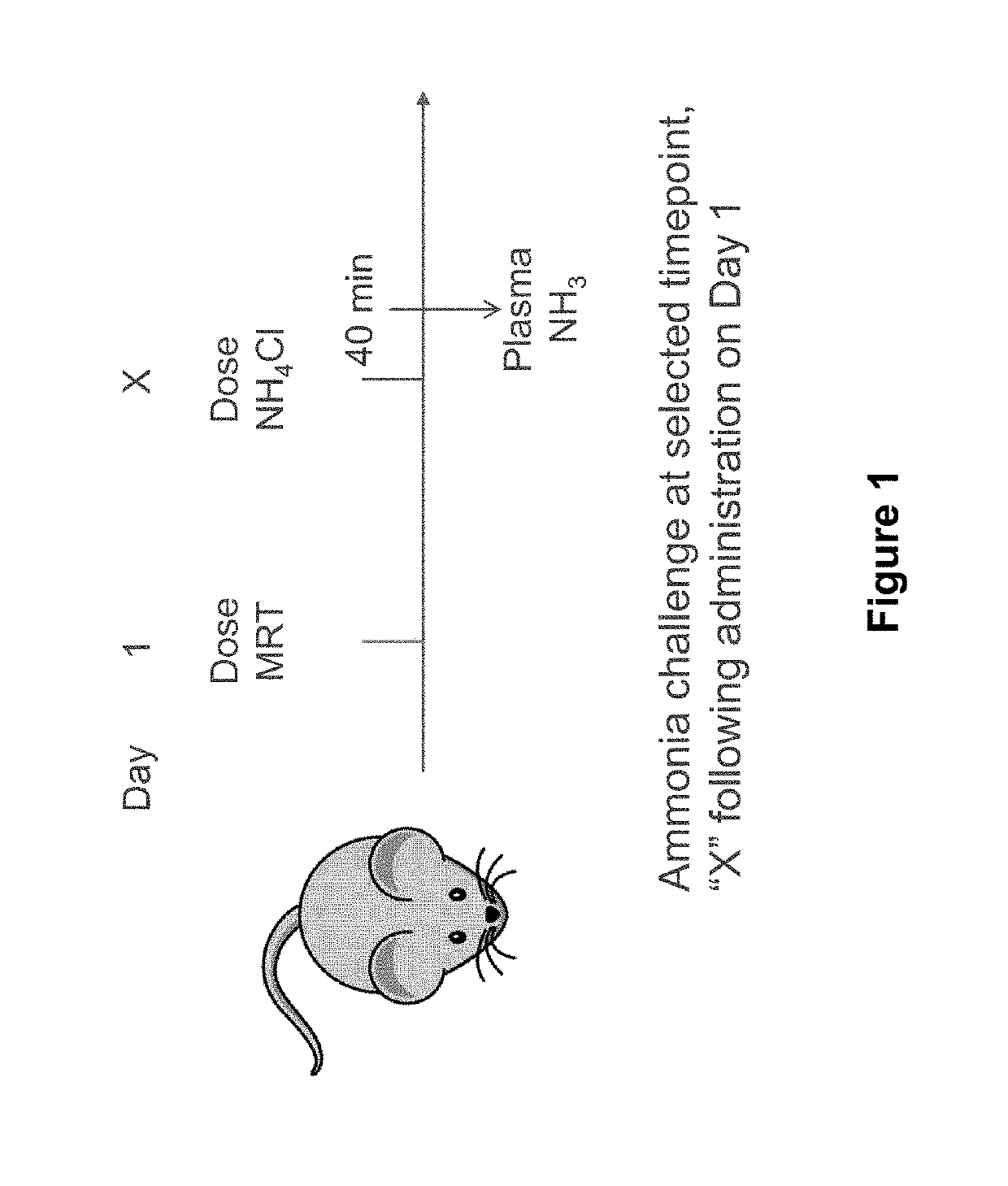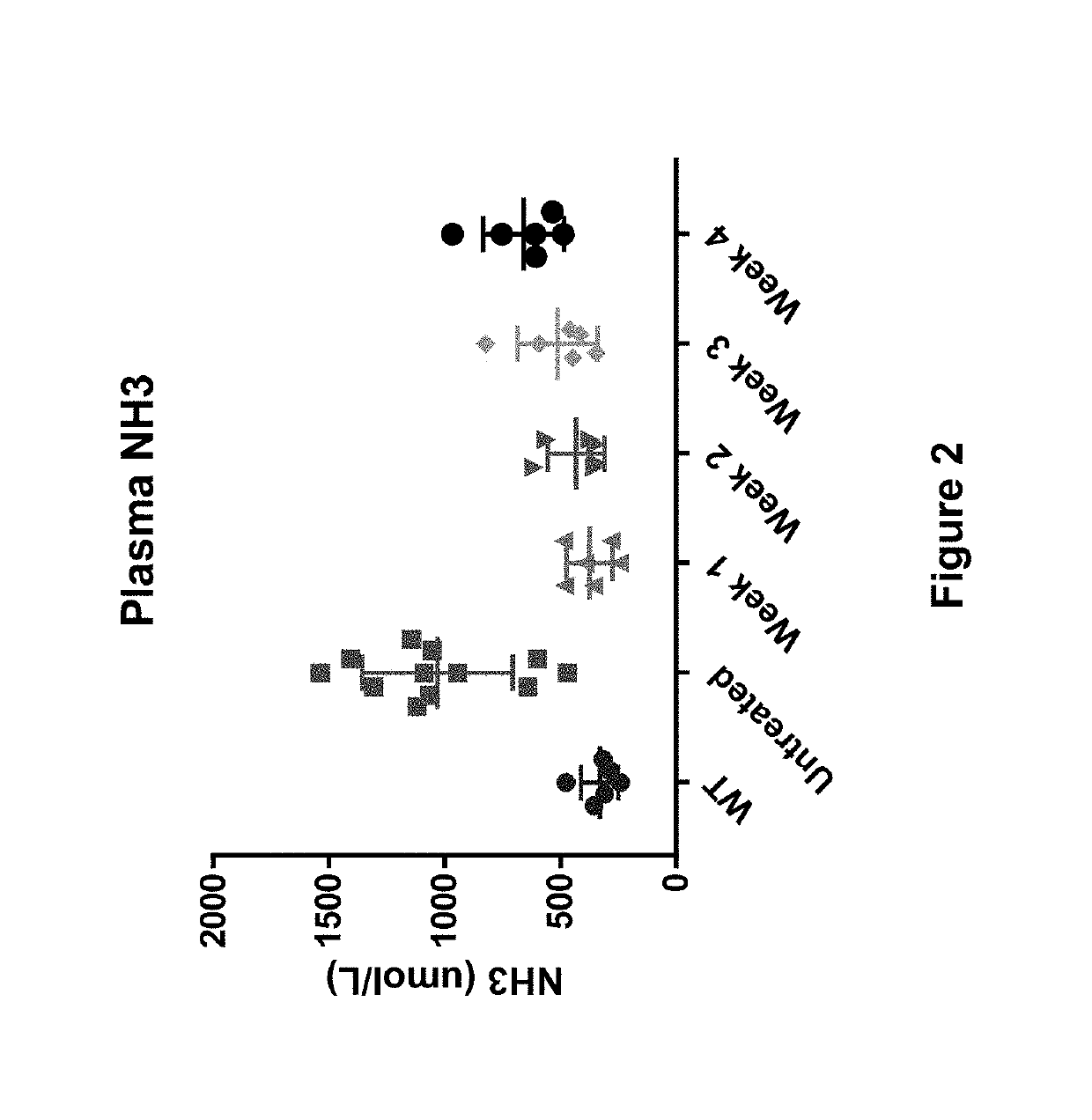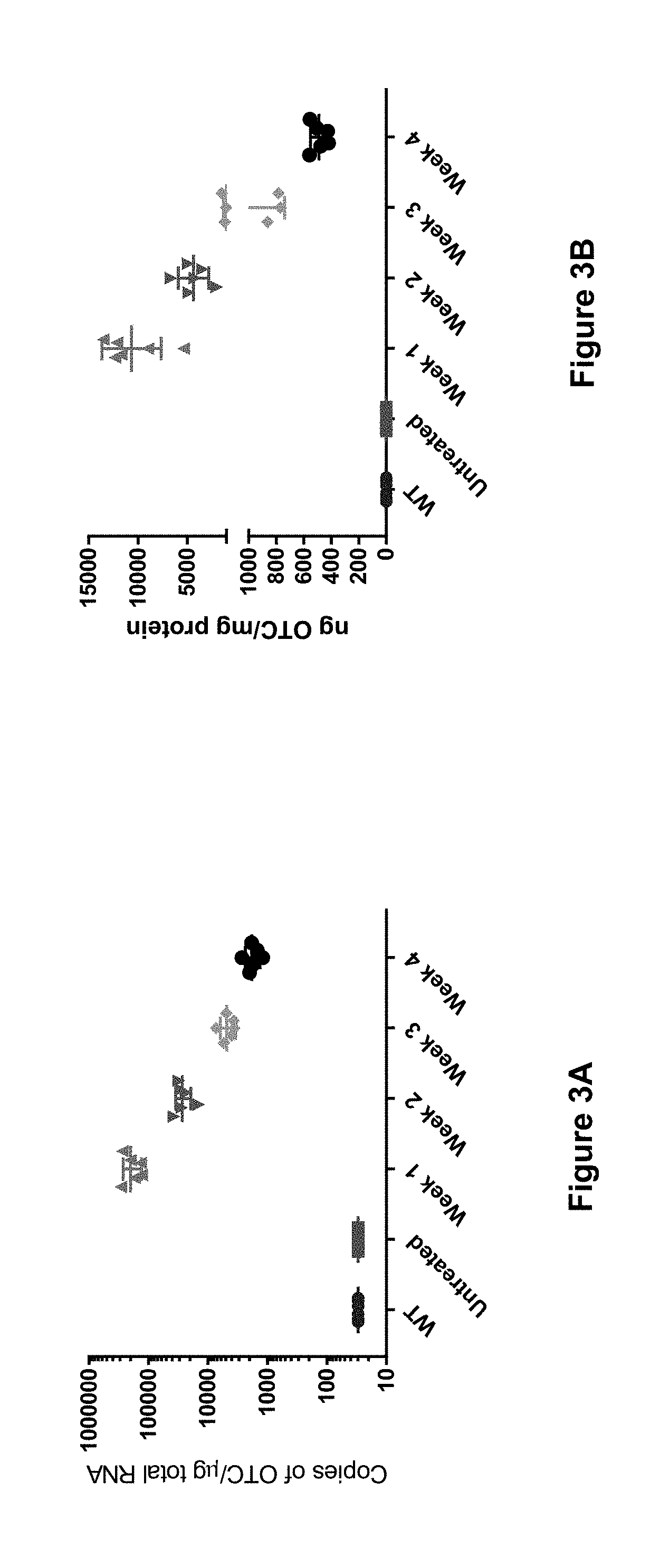Composition and Methods for Treatment of Ornithine Transcarbamylase Deficiency
a technology of ornithine transcarbamylase and ornithine transcarbamylase, which is applied in the direction of transferases, peptide/protein ingredients, metabolic disorders, etc., can solve the symptoms of otc deficiency, severe encephalopathy with a high risk of death, hyperammonemic coma, etc., to achieve effective levels of otc protein expression, wide therapeutic index, and significant safety margin
- Summary
- Abstract
- Description
- Claims
- Application Information
AI Technical Summary
Benefits of technology
Problems solved by technology
Method used
Image
Examples
example 1
OTC mRNA Provides Two Weeks and Longer hOTC Protein Production, hOTC Protein Activity, and Maintained Reduction of Hyperammonemia
[0266]The study described in this example shows that a single low-dose (e.g., 0.15 mg / kg) of hOTC mRNA delivered in a lipid nanoparticle formulation provides sustained presence of hOTC mRNA, sustained expression of hOTC protein, sustained activity of that hOTC protein, and a sustained reduction of a hyperammonemic state for up to and at least for two weeks (i.e., at least 15 days following administration), for up to and at least for three weeks (i.e., at least 22 days following administration), and for up to and at least for four weeks (i.e., at least 29 days following administration).
Study Design and Assessments
[0267]As outlined in the experimental design in Table 2 below, 30 female spfash mice (KO) were randomized into five cohorts (Groups 2-6) and on Day 1 were administered hOTC mRNA in a lipid nanoparticle formulation at a dose of 0.15 mg / kg of mRNA (G...
example 2
OTC mRNA Across a Range of Doses Provides Significant Reduction in Hyperammonemia
[0282]The study described in this example shows that a single low-dose (e.g., as low as 0.06 mg / kg) of hOTC mRNA delivered in a lipid nanoparticle formulation provides a potent reduction in hyperammonemia.
[0283]In this study, spfash mice were randomized into six cohorts, with each cohort being administered hOTC in a lipid nanoparticle formulation at a dose of 0.06 mg / kg, 0.08 mg / kg, 0.10 mg / kg, 0.12 mg / kg, or 0.14 mg / kg mRNA, or the same volume of buffer (Untreated). After one day (24 hours) all animals were removed for assessment of response to ammonia challenge. As a reference control, a group of wild-type mice (WT) was treated with buffer at the same time as the treatment and Untreated groups and then also removed after one day (24 hours) for the same assessment. All doses were administered at 5.0 mL / kg via tail vein injection.
[0284]The assessment of response to ammonia challenge was conducted as des...
example 3
l Delivery of hOTC mRNA in a Lipid Nanoparticle Formulation to Hepatocytes in Primates
[0286]The study in this example shows successful delivery of hOTC mRNA to and expression of hOTC protein in the liver, and particular in hepatocytes, of a primate following systemic administration to the primate of hOTC mRNA in a lipid nanoparticle formulation.
[0287]Specifically, male cynomolgus monkeys were treated with either hOTC mRNA in a lipid nanoparticle formulation or saline via slow infusion over 30 minutes. The hOTC mRNA in the lipid nanoparticle formulation was administered at a 0.30 mg / kg dose. Liver and spleen biopsies were harvested 24 hours post-administration and fixed in 10% neutral buffered formalin. In situ hybridization (ISH) was performed on fixed tissue samples for specific detection of hOTC mRNA. Immunohistochemical (IHC) analysis was performed on fixed tissue samples for detection of human OTC protein.
[0288]FIG. 6A depicts detection of human OTC mRNA by in situ hybridization...
PUM
| Property | Measurement | Unit |
|---|---|---|
| time | aaaaa | aaaaa |
| length | aaaaa | aaaaa |
| plasma ammonia level | aaaaa | aaaaa |
Abstract
Description
Claims
Application Information
 Login to View More
Login to View More - R&D
- Intellectual Property
- Life Sciences
- Materials
- Tech Scout
- Unparalleled Data Quality
- Higher Quality Content
- 60% Fewer Hallucinations
Browse by: Latest US Patents, China's latest patents, Technical Efficacy Thesaurus, Application Domain, Technology Topic, Popular Technical Reports.
© 2025 PatSnap. All rights reserved.Legal|Privacy policy|Modern Slavery Act Transparency Statement|Sitemap|About US| Contact US: help@patsnap.com



